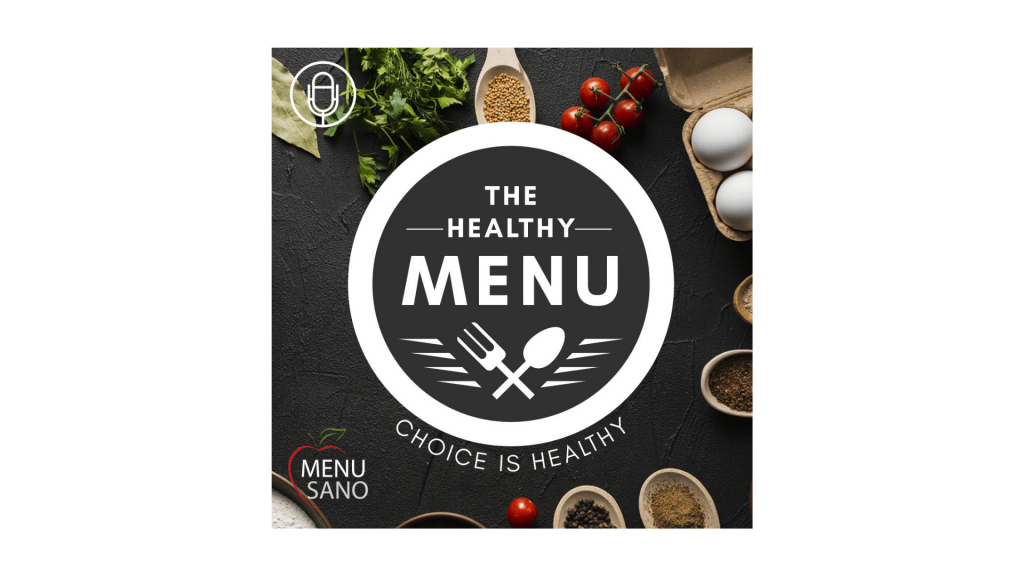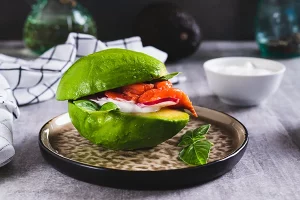 Karan Dholakia, Social Media Content Producer and Videographer provides practical advice and tips on marketing your healthy dishes and foodservice business on social media.
Karan Dholakia, Social Media Content Producer and Videographer provides practical advice and tips on marketing your healthy dishes and foodservice business on social media.
Christine and Karan discuss some of the ways to market on social media through practical, simple, and ethical methods.
Light Transcript of Interview
C: My first question for you is, why should restaurants use social media, why not just have a website?
K: It’s interesting, we live in an age now where social media has become almost the norm of our daily lives; not just our offline lives but our jobs as well. We’re surrounded by it down to the companies that we work at. Focusing on restaurants specifically, 59% of chain restaurants and 79% of independent restaurants use social media. It totally depends on your business but there is merit in having a social media profile, regardless of which platform it is, whether it’s Instagram, Facebook or LinkedIn, there is a guaranteed audience for you. I think the most important thing that people tend to forget is that it’s free marketing. If we go back to the days of traditional marketing where you used to pay for a full-page ad in a magazine or a newspaper – I was reading about how New York Times still charges up to USD $150,000 for a full-page spread. Whilst NYT still has a large readership, social media has an audience into the billions.
Social media gives you the opportunity to get direct customer feedback, you can build that relationship almost instantaneously and the networking opportunities are huge. You can direct message someone on Instagram and build a collaboration – it takes seconds to do that. Before, you might have had to go through someone’s assistant or the switchboard but now you can go directly to an Instagram profile or Facebook profile and message them.
C: That’s great so it’s going to cost a lot less than traditional marketing and also you can start to develop more of a relationship with your customers vs a print ad which is very one-way.
K: The other thing is the ability to track the feedback you’re getting in real-time. Whilst traditional methods may be effective in some instances, you’re not able to track the ROI on that. You can track the amount of feedback you’re getting through analytics or the comments and engagement you’re getting.
With a website, you’re giving yourself the ability to customise based on your brand. You’re giving yourself a home base – it’s there. A few downsides are maintenance, you have to pay for the hosting but it’s fully owned by you. Traditional print media is a very one-way system. You’re putting content out there and you’re not giving anybody the platform to respond back to you. By having a social media platform, what you’re doing is you’re inviting constant feedback from the things you’re putting out.
C: So social media is definitely more dynamic than having a website? So if you’re just starting out on social media and maybe you set up an account a few years ago and you haven’t really posted much on it. What can you do now to get followers and get your account going?
K: Trying to find the right platform for you can be difficult. One of the ways you can get around it is by posting content. One of the most important things is consistency. If you’re not posting regularly, you’re not going to be able to find out what the right platform is for you. If you’re posting once a week, you’re not giving your audience the ability to even discover your content.
C: Okay, so more than once a week(!)
K: Absolutely! For example, Instagram, let’s say I put 3-4 posts today, and people are engaging with that post. Those people who are engaging with that post are going to be seeing my posts more often because what Instagram says is that the algorithm is going to treat my posts as their ‘family/friends circle’ and it’ll show the audience and those people who have liked my posts more of my content. It’s hyper-targeted content that’s going towards these people. If you’re new to it, the best way to try and figure out what’s right is by consistently posting content and seeing what works.
C: So you want to get people to follow you so that they start seeing your content and hopefully you’re posting regularly so that they’re seeing it often but sometimes you hear about ‘hacks’ to getting followers, sometimes you can buy followers, what is your opinion on buying followers?
K: There are different schools of thought on this. You’ve got to ask yourself the question, is it about ‘vanity metrics’ (likes, follows, etc) or is about the quality of the content that you’re putting out? Now one of the biggest things about buying followers is that you’re not going to get true engagement with these followers. If you’re putting content out and these ghosts, effectively, or ‘bots’ are liking your posts, your real audience will get no value from that. What’s going to happen is there’s going to be a massive discrepancy – let’s say you’ve got 10,000 followers. Let’s say you’ve got 100 real followers and 9,900 of those followers are fake, you’re not going to get much from those followers. If people start to catch wind of the discrepancy between the amount of likes that you’re getting and the followers that you have then there’s a big issue when it comes to the trust of your business. The engagement that you can really get should be a testament to the validity of your business. If you’re not getting any real people commenting on your content, then there’s going to be something wrong there.
C: So I guess in social media you want to be a ‘happening’ brand where you have real people commenting and interacting with your posts, to add a better reputation so people will come and see your social media and see that it’s really popular, something you won’t get with a website necessarily, but you can with social media.
K: Absolutely. I guess the other thing is you’d be lying to yourself in terms of, if you’re looking for a return on investment or if you’re looking for people to come to your establishment, you’re not going to get that from fake followers. You need to really find out what it is that your audience wants and if you’ve got 10,000 fake followers just for the sake of having followers, you’re not providing any kind of value to your business. If you’re a restaurant or a food business and you’re trying to become a player in the industry, you need to be organic and you need to be truthful with the way you use your social media.
C: So what about influencers? This is a whole other industry that has come from social media where you can pay people to promote your business. Do you think there’s any value to that to help you? Is it worthwhile getting an influencer?
K: There are merits to partnering up with influencers and I think there are different ways to go about it. One of the most popular ways is getting an influencer to come to your establishment and getting them to cover it on their social media. If this influencer has 20k+ followers, and they’re putting it out on their social media that your restaurant is THE restaurant to go to, there’s going to be a knock-on effect. You’re not going to get all 20,000 followers to come to your restaurant but the thing with influencers is that people trust them. And the people who are following them trust their opinion when it comes to things. There are numerous studies out there that say traditional advertising doesn’t work on people anymore and that you need to get influencers to try and convince people to buy your product or whatever it is.
C: Well we know that the most powerful thing for your marketing is word of mouth, it’s what sways people overusing one brand over another so it makes sense that an influencer can be a positive thing for your restaurant.
K: Definitely, but don’t get it twisted; it could go horribly wrong, you’ve got to have trust in the influencer and the partnership has to be 100% compatible with your business and it goes both ways.
C: So you have to do your research, you have to check out their profile and make sure they have real followers!
K: Absolutely, I think one of the biggest things is you’ve got to make sure that their credibility is a representation of what your business represents as well. If the influencer isn’t a right fit for you, it can go horribly wrong. Their audience may not even be the right audience for you and I think that’s one of the biggest things, you’ve got to find someone that is 100% compatible with your business before you even approach them.
C: So another way to find followers and promote is the use of hashtags. How do you find which hashtags you should use?
K: Good question. There are several ways of looking at this. Instagram, for example, their organic reach has decreased significantly over the last few months. And we’ve seen that across a number of profiles. The use of hashtags, you have to be way more calculated than you used to be. Oftentimes what people do is they’ll throw 30 hashtags on their post and hope somebody discovers their post and someone might discover it but you’re not going to get the right amount of traction compared to if you are more calculated. There needs to be a good mix of hashtags ranging from niche hashtags specific to your business to mid-range ones where you’ve got people in the 1000s looking at them and then you’ve got the overarching, high-level ones where you’ve got the millions looking at them. If you’re throwing in hashtags for the sake of it, your content isn’t going to be discovered.
C: That ‘s really good advice in terms of the hashtags you should pick and choose from, are there any tools that can help you figure out which hashtags are good to try out?
K: There are hundreds of tools out there. Right now, I’m using a tool called RiteTag and what that does is it integrates across all social networks and even software like Hootsuite. What it does is allows you to discover hashtags that are ‘trending’. Take that with a pinch of salt because trending doesn’t mean it’s going to be right for you. There are a number of tools out there but the thing to realise and understand is a lot of the platforms are closing off the access, the APIs, so it’s not easy to find those hashtags that work for you. So one of the best ways to find hashtags are on the platforms themselves.
Let’s say you’re a healthy restaurant and you’re serving vegan food. Try looking for hashtags around vegan food, try and find those on the platforms themselves and seeing what kind of results you’re getting and try and tailor your content around that.
C: So are you saying if you’re posting on Facebook, Instagram, and maybe Twitter, should you, can you use the same hashtags for all three platforms?
K: It’s interesting because on Facebook, whilst hashtags work it’s not really a universal thing, I think a lot of content on Facebook is discoverable mainly through the search box but trying to find your content in the sea of millions of content is a difficult one. Hashtags generally can be used on Facebook but I would tailor them based on the platform. So LinkedIn will have a completely different audience, so you need to tailor your content and hashtags based on the audience on LinkedIn. Likewise with Instagram. So a hashtag that might have a million followers on Instagram might have a completely different audience than it does on LinkedIn. It’s about doing that research and making sure you’re not throwing hashtags on for the sake of throwing them on.
C: That’s some good advice on hashtags. So what’s the deal with Stories? How can you leverage them to help with your marketing?
K: Stories are an incredibly powerful tool. If we take into consideration the placement of stories, let’s say I was following you and you put a story out, the placement of stories is directly above the feed so it’s the first thing that anybody sees when they go on Instagram. It’s an incredibly powerful tool to market the stuff that’s active and in the moment. It could be things like, ‘what’s cooking in the kitchen?’ Whether it’s an owner or an assigned person in the restaurant to talk about the stuff that’s cooking in the kitchen, is there a new dish? What’s the most popular thing on the menu? What’s the soup of the day? Can you talk about that on Stories? It’s trying to figure out what the purpose is of your stories. Another way of doing things is getting people to send in their experiences in your restaurant. They could send you a video and you could highlight that in your stories. Get people to tag your restaurant or business in their stories and look through these tags and mentions.
C: Ah, so it’s a good way to get social reach by tagging.
K: Not just that but it also opens up the possibilities of doing things like contests. If someone sends in a video and you mention them in your stories, that person gets to come in and gets a free dish or a free meal. There are a number of ways you can capitalise on Stories. The thing about UGC (User Generated Content), is that your fans are doing 95% of the work for you. All you have to do is post it and tag them in it.
C: So coming into 2020, what are some of the social media trends we can expect? I’ve heard video is going to be an important type of content.
K: Video has been growing for the last couple of years and it’s only going to continue. If there’s anything to take from this year, it’s to understand how to create video. Now video is so much more accessible than it ever was. You don’t need thousands of dollars worth of equipment anymore you can just use the phone in your hand. You don’t need an entire crew, you’ve got that in your pocket. Video is most definitely the way forward. It allows you to showcase your business in a way that no other form of medium can.
C: Thank you so much Karan, I hope everyone had a few takeaways from that on how they can boost their social media marketing, especially if you’re marketing a niche product like healthier food or vegan, keto, anything like that.
Read more: Bitesize: The Benefits of Labelling




















